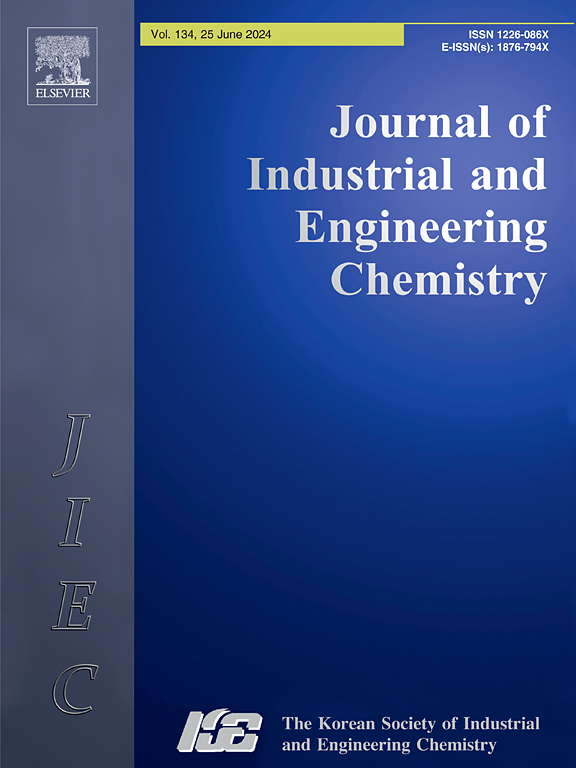二氧化钛基复合光致变色材料研究进展
IF 5.9
3区 工程技术
Q1 CHEMISTRY, MULTIDISCIPLINARY
Journal of Industrial and Engineering Chemistry
Pub Date : 2024-11-23
DOI:10.1016/j.jiec.2024.11.042
引用次数: 0
摘要
随着智能材料领域的快速发展,光致变色材料具有广泛的应用前景。二氧化钛(TiO2)作为一种常见的半导体材料,在光致变色材料的制备中被广泛研究。然而,单一的二氧化钛材料在光致变色性能方面存在一定的局限性。因此,引入多元复合方法成为提高材料性能的重要途径。本文旨在回顾基于 TiO2 的多元复合光致变色材料的最新研究进展,并探讨不同复合体系对光致变色性能的影响。本文首先介绍了 TiO2 光致变色材料的基本性质和应用领域,为下文的讨论奠定了基础。其次,对基于 TiO2 的二元复合光致变色材料进行了详细分类和讨论,包括 TiO2/金属、TiO2/金属氧化物和其他基于 TiO2 的二元复合材料。然后讨论了基于 TiO2 的三元复合光致变色材料的研究进展。最后,展望了基于 TiO2 的多元复合光致变色材料的未来发展方向。本文为今后复合光致变色材料的研究提供了参考,推动了光致变色材料在实际应用中的发展,促进了智能材料领域的进步与创新。本文章由计算机程序翻译,如有差异,请以英文原文为准。

Advancements in TiO2-based multi-composite photochromic materials: A review
With the rapid development in the field of smart materials, photochromic materials have a wide range of application prospects. Titanium dioxide (TiO2), as a common semiconductor material, is widely studied in the preparation of photochromic materials. However, a single TiO2 material has some limitations in photochromic performance. Therefore, the introduction of a multi-faceted composite approach becomes an important way to enhance the performance of the materials. The aim of this paper is to review the latest research progress of TiO2-based multi-composite photochromic materials and to explore the effects of different composite systems on photochromic properties. This paper first introduces the basic properties and application areas of TiO2 photochromic materials, which provides a basis for the subsequent discussion. Second, TiO2-based binary composite photochromic materials are classified and discussed in detail, including TiO2/metal, TiO2/metal oxide, and other TiO2-based binary composites. Then the research progress of TiO2-based ternary composite photochromic materials is discussed. Finally, the future development direction of TiO2-based multi-composite photochromic materials is envisioned. This paper serves as a reference for future research on composite photochromic materials, promotes the development of photochromic materials in practical applications, and facilitates progress and innovation in the field of smart materials.
求助全文
通过发布文献求助,成功后即可免费获取论文全文。
去求助
来源期刊
CiteScore
10.40
自引率
6.60%
发文量
639
审稿时长
29 days
期刊介绍:
Journal of Industrial and Engineering Chemistry is published monthly in English by the Korean Society of Industrial and Engineering Chemistry. JIEC brings together multidisciplinary interests in one journal and is to disseminate information on all aspects of research and development in industrial and engineering chemistry. Contributions in the form of research articles, short communications, notes and reviews are considered for publication. The editors welcome original contributions that have not been and are not to be published elsewhere. Instruction to authors and a manuscript submissions form are printed at the end of each issue. Bulk reprints of individual articles can be ordered. This publication is partially supported by Korea Research Foundation and the Korean Federation of Science and Technology Societies.

 求助内容:
求助内容: 应助结果提醒方式:
应助结果提醒方式:


